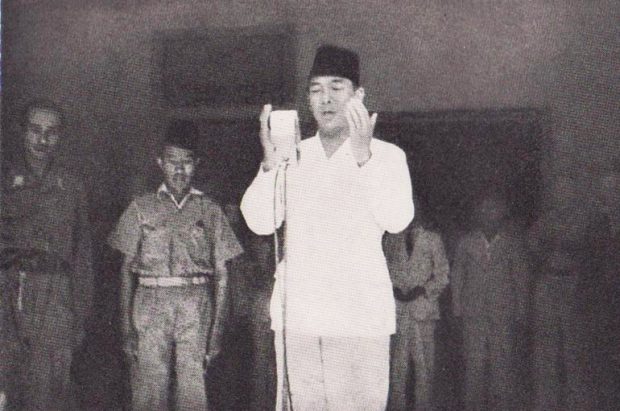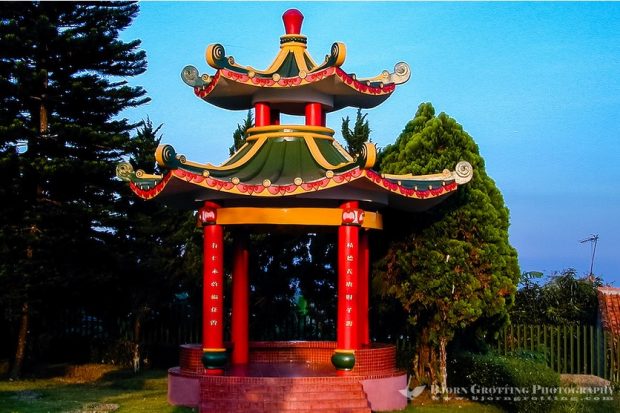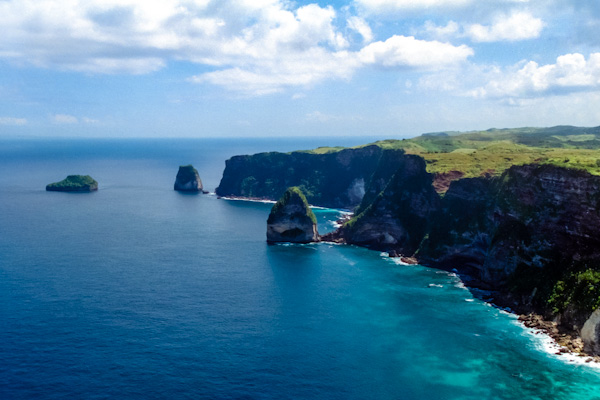The Portuguese were the first Europeans to come in significant numbers to the archipelago. The golden age of Portuguese exploration and conquest in Asia began with Vasco da Gama’s voyage to India in 1497-99 and continued through the first half of the sixteenth century. Faith and profit, nicely harmonized, motivated these early European explorers. The papacy charged Portugal with converting Asia to Christianity.
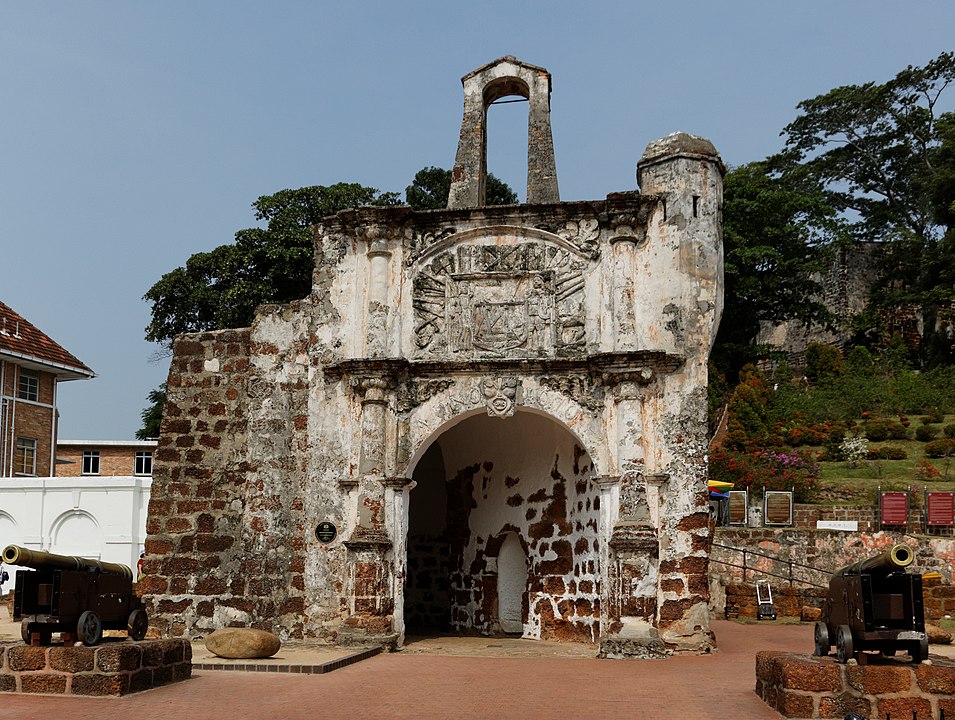
Equipped with superior navigational aids and sturdy ships, the Portuguese attempted to seize rich trade routes in the Indian Ocean from Muslim merchants. They established a network of forts and trading posts that at its height extended from Lisbon by way of the African coast to the Straits of Hormuz, Goa in India, Melaka, Macao on the South China coast, and Nagasaki in southwestern Japan. The Portuguese came to Indonesia to monopolize the spice trade of the eastern archipelago. Nutmeg, mace, and cloves were easily worth more than their weight in gold in European markets, but the trade had hitherto been dominated by Muslims and the Mediterranean city-state of Venice. Combining trade with piracy, the Portuguese, operating from their base at Melaka, established bases in the Maluku Islands at Ternate and on the island of Ambon but were unsuccessful in gaining control of the Banda Islands, a center of nutmeg and mace production.
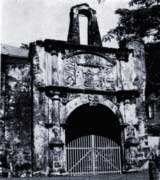
Indonesian Muslim states wasted no time in trying to oust the intruders
. During the sixteenth century, the sturdy Portuguese fort of A Famosa (the Famous One) at Melaka withstood repeated attacks by the forces of the sultans of Johore (the descendants of the ruler of Melaka deposed by the Portuguese), Aceh, and the Javanese north coast state of Jepara, acting singly or in concert. The Portuguese were minimally involved in Java, although there were attempts to forge alliances with the remaining Hindu-Buddhist states against the Muslims. The Portuguese goal of Christianizing Asia was largely unsuccessful. Saint Francis Xavier, a Spaniard who was an early member of the Society of Jesus (Jesuits), established a mission at Ambon in 1546 and won many converts whose lineal descendants in the early 1990s were Protestant Christians. The small enclave of Portuguese (East) Timor, which survived three centuries surrounded by Dutch colonialism only to be formally absorbed into Indonesia in 1976, was largely Roman Catholic.
Given Portugal’s small size, limited resources, and small labor pool, and its routinely brutal treatment of indigenous populations, Portugal’s trading empire was short-lived, although remnants of it, like Portuguese Timor, survived into the late twentieth century. Although numerically superior Muslim forces failed to capture Melaka, they kept the intruders constantly on the defensive. Also, the dynastic union of the Portuguese and Spanish crowns in 1580 made for Portugal a new and increasingly dangerous enemy: the Dutch.
The United East India Company
The United Provinces of the Netherlands was, in a sense, the world’s first modern state. It was a republic dominated by middle class burghers rather than a dynastic monarchy. Winning independence from Spain in 1581, the Netherlands became a major seafaring power. During the seventeenth century, Amsterdam emerged as Europe’s primary center for commerce and banking. Largely Protestant and Calvinist, the new state, unlike Portugal, did not reflect the crusading values of the European Middle Ages.
A four-ship Dutch fleet entered Indonesian waters in 1596, visiting Banten on the western tip of Java as well as north-coast Javanese ports and returning home with a profitable cargo of spices. There followed a few years of “wild” or unregulated voyages, when several Dutch trading concerns sent out ships to the islands. In 1602, however, these companies merged to form the United East India Company (VOC – Vereenigde Oostindische Compagnie) under a charter issued by the Dutch parliament, the Staten-Generaal.

Although its directors, the Heeren Zeventien (Seventeen Gentlemen), were motivated solely by profit, the VOC was not simply a trading company in the modern sense of the word. It had authority to build fortresses, wage war, conclude treaties with indigenous rulers, and administer justice to subject populations. In the early years, the Heeren Zeventien attempted to direct their operations from Amsterdam, but this proved impossible and in 1610 the post of governor general of the VOC was established. Jan Pieterszoon Coen, governor general from 1619 to 1623 and again from 1627 to 1629, was the most dynamic VOC chief executive. He seized the port of Jayakarta (modern Jakarta, also known as Batavia during the colonial period) from the sultan of Banten in western Java and established the trading post at Sunda Kelapa. Since then, it has served as the capital of the VOC, of the Netherlands Indies after 1816, and of the independent Indonesian state after World War II.
Coen was determined to go to almost any lengths to establish and reserve a VOC monopoly of the spice trade. He accomplished his goal by both controlling output and keeping non-VOC traders out of the islands. Ambon had been seized from the Portuguese in 1605, and anti-Iberian alliances were made with several local rulers. However, the English East India Company, established in 1600, proved to be a tenacious competitor. When the people of the small Banda archipelago south of the Malukus continued to sell nutmeg and mace to English merchants, the Dutch killed or deported virtually the entire population and repopulated the islands with VOC indentured servants and slaves who worked in the nutmeg groves. Similar policies were used by Coen’s successors against the inhabitants of the clove-rich Hoamoal Peninsula on the island of Ceram in 1656. The Spanish were forced out of Tidore and Ternate in 1663. The Makassarese sultan of Gowa in southern Sulawesi, a troublesome practitioner of free trade, was overthrown with the aid of a neighboring ruler in 1669. The Dutch built fortresses on the site of the Gowa capital of Makassar (modern Ujungpandang) and at Manado in northern Sulawesi and expelled all foreign merchants. In 1659 the Dutch burned the port city of Palembang on Sumatra, ancient site of the Srivijaya empire, in order to secure control of the pepper trade.
The Dutch on Java, 1619-1755
Source: Based on information from D.G.E. Hall, A History of South-East Asia, New York, 1981, 351; and Geoffrey Barraclough and Norman Stone (eds.), The Times Atlas of World History, Maplewood, New Jersey, 1989, 176.
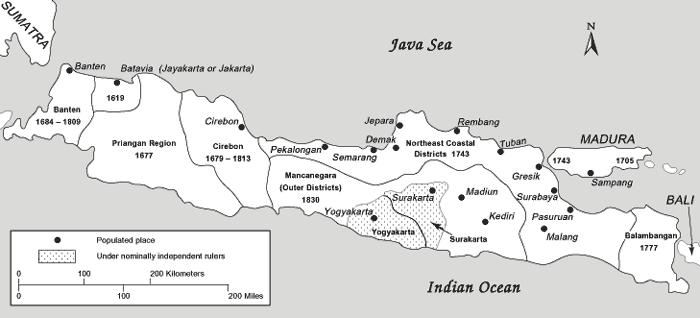
The key to Dutch commercial success in Indonesia was the security of its base of operations at Batavia. The security issue involved the VOC in the internal politics of Java. The earliest governor generals had not intended to become involved in Java’s politics. They had envisioned the company as primarily a maritime power, consisting of a network of forts and heavily defended trading routes. But during the seventeenth century and especially the eighteenth century, the Dutch found themselves caught up in Java’s perennial political instability. Defense of VOC interests required the raising of armies and collection of revenue from rulers and the general population to pay for them (click on map to see Dutch Expansion in Java, 1619-1830).
By the 1620s, Sultan Agung of Mataram had conquered Surabaya, a powerful rival state, extended his power on Java as far west as Cirebon, occupied the island of Madura after a bloody campaign, and forced the sultans of Banjarmasin and Sukadana on Kalimantan (known during the colonial era as Borneo) to become his tributaries. Batavia, already threatened by the hostile sultan of Banten, was besieged by Mataram forces by both land and sea in 1628-29. The siege was unsuccessful, and Sultan Agung had to accept the company’s continued existence on Java. Royal poets and chroniclers, however, portrayed Dutch diplomatic missions to the Mataram court after 1629 as expressions of humble submission. The ruler turned his attention eastward, devastating the Hindu-Buddhist state of Balambangan but suffering defeat in his attempt to conquer the intrepid Balinese.
A revolt against Sultan Agung’s successor, Amangkurat I (reigned 1646-77), in 1671 led the ruler, much resented for his harsh policies, to seek Dutch assistance against the rebels. When his palace was captured by the rebels, Amangkurat I sought refuge on VOC-controlled territory in 1677, where he died. His successor, Amangkurat II (reigned 1677-1703) gave the VOC monopolies over the sugar, rice, opium, and textile trade in Mataram territory in exchange for the VOC’s military support in his efforts to regain the throne. Amangkurat II also agreed to the cession of the Priangan Districts south of Batavia. In 1684 the crown prince of Banten, involved in a revolt against his own father, asked for Dutch aid and in return was obliged to make concessions that essentially spelled the end of the kingdom’s independence.
In the eighteenth century, Mataram experienced continued struggles for power among royal contenders. The First Javanese War of Succession (1704-08) resulted in Pakubuwono I (reigned 1705-19) assuming the throne with Dutch aid; in return, he gave the VOC the privilege of building forts anywhere it wished in Java, the right to station a VOC garrison at the royal court paid for by the royal treasury, an annual grant to Batavia of a large amount of rice for twenty-five years, and the promise that Javanese ships would not sail east of the island of Lombok or beyond the bounds of the Java Sea. The Second Javanese War of Succession (1719-23) resulted in the installation of Amangkurat IV (reigned 1719-26) as king, and further concessions were made to the VOC.
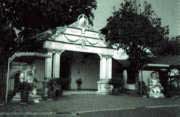
The Third Javanese War of Succession (1746-55) was decisive because it resulted in the division of Mataram into the states of Surakarta and Yogyakarta, each with its own sultan. Two years after Pakubuwono II (reigned 1725-49) had agreed to lease the north coast of Java to the VOC, Javanese princes led by Mangkubumi rebelled in 1745 precipitating war against the Dutch. The war dragged on until 1755, when the Treaty of Giyanti was ratified, recognizing Pakubuwono III (reigned 1749-55) as ruler of Surakarta and Mangkubumi (who took the title of sultan and the name Hamengkubuwono) as ruler of Yogyakarta. In 1757 a new state, Mangkunegaran, was carved from Surakarta territory. Banten, meanwhile, had become a territory of the VOC in 1753. The policy of divide and rule brought a measure of peace to Java thereafter, but the VOC had little time to enjoy the fruits of its many decades of involvement in court politics.
VOC Bankruptcy and the British Occupation
Not only continuous wars on Java but also the VOC’s own greed and shortsightedness led to its undoing by the end of the eighteenth century. Its personnel were extraordinarily corrupt, determined to “shake the pagoda tree” of the Indies, to use a phrase popular with its eighteenth-century British contemporaries, to get rich quick. Although the VOC preserved its monopoly over the spice trade, it could not prevent foreign rivals, especially the British and French, from growing spices on their own territories in the West Indies and elsewhere. Thus, European markets were assured a cheap supply. Moreover, the development in Europe of winter forage in the late seventeenth century made spices less of a necessity, since livestock did not have to be slaughtered in autumn and its meat preserved with spices over the cold season. War between the Netherlands and Britain in 1780-84 also prevented the VOC from shipping its goods.
The VOC turned to new cash crops and products: pepper and textiles from Sumatra, and coffee and tea grown in the mountainous Priangan Districts. In Priangan, inhabited by people of the Sundanese ethnic group, the local rulers collected coffee from cultivators and delivered it to the VOC. Coffee became Java’s most profitable crop from the early eighteenth to the mid-nineteenth century. But despite such diversification, the Dutch StatenGeneraal in 1789 discovered the company had a deficit of some 74 million guilders. The Netherlands was occupied by French troops in 1795, and a French protectorate established. The new government abolished the VOC by allowing its charter to lapse in 1799. VOC territories became the property of the Dutch government.
In 1808 Louis Bonaparte, who had been made king of the Netherlands by his brother Napoleon, appointed Herman Willem Daendels as governor general of the Dutch possessions. Daendels, imbued with the ideas of the French Revolution, had scant patience for the intricacies of Java’s “feudal” political system and introduced a comprehensive set of reforms. In doing so, he earned the hostility of the Javanese nobility who had benefited from the old system of indirect rule. But in 1811, a year after the Netherlands had been incorporated into the French empire, the British occupied Java. In August 1811, they seized Batavia and a month later received the surrender of French forces.

Thomas Stamford Raffles was appointed lieutenant governor of Java (1811-16) and its dependencies by the British East India Company in Calcutta. Raffles, best known for being the founder of Singapore in 1819, attempted, like Daendels, comprehensive reform. Many of his ideas were enlightened: abolition of forced labor and fixed quotas for cash crops, peasants’ free choice of which crops to grow, salaries for government officials, abolition of the slave trade in the archipelago, and improvement of the lot of slaves (his goal of total opposition to slavery was deemed impractical). Raffles also sponsored the establishment of a subsidiary court, Pakualaman, in Yogyakarta in 1812, further dividing the authority of the Yogyakarta sultanate. But there was little time for these efforts to take root. At the outset of the Napoleonic Wars, the British government had promised the Dutch government-in-exile that at the end of the war occupied territories would be returned to the Netherlands. Over the objections of Raffles, Dutch authority was reestablished in 1816.
Data as of November 1992

